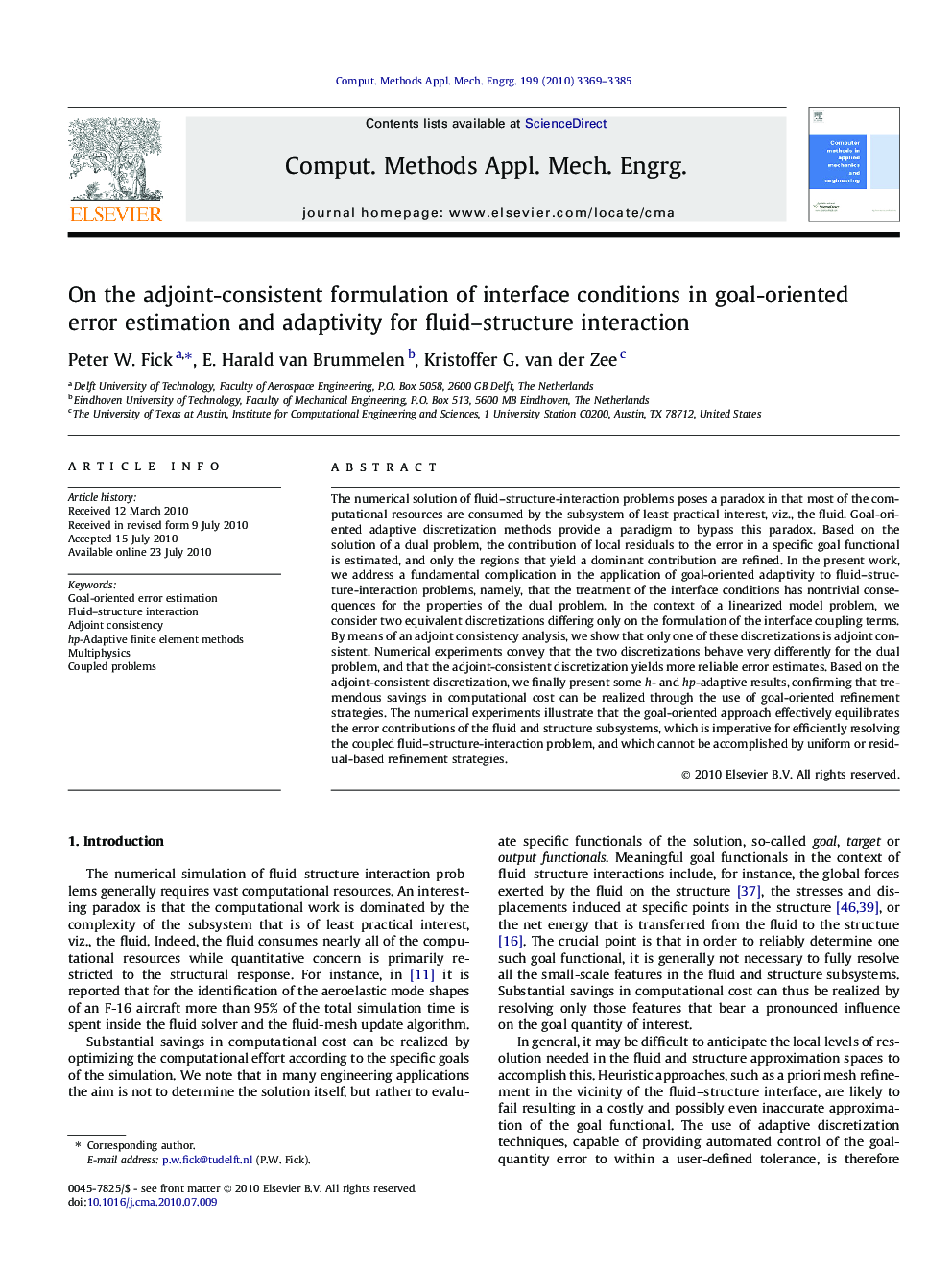| Article ID | Journal | Published Year | Pages | File Type |
|---|---|---|---|---|
| 498829 | Computer Methods in Applied Mechanics and Engineering | 2010 | 17 Pages |
The numerical solution of fluid–structure-interaction problems poses a paradox in that most of the computational resources are consumed by the subsystem of least practical interest, viz., the fluid. Goal-oriented adaptive discretization methods provide a paradigm to bypass this paradox. Based on the solution of a dual problem, the contribution of local residuals to the error in a specific goal functional is estimated, and only the regions that yield a dominant contribution are refined. In the present work, we address a fundamental complication in the application of goal-oriented adaptivity to fluid–structure-interaction problems, namely, that the treatment of the interface conditions has nontrivial consequences for the properties of the dual problem. In the context of a linearized model problem, we consider two equivalent discretizations differing only on the formulation of the interface coupling terms. By means of an adjoint consistency analysis, we show that only one of these discretizations is adjoint consistent. Numerical experiments convey that the two discretizations behave very differently for the dual problem, and that the adjoint-consistent discretization yields more reliable error estimates. Based on the adjoint-consistent discretization, we finally present some h- and hp-adaptive results, confirming that tremendous savings in computational cost can be realized through the use of goal-oriented refinement strategies. The numerical experiments illustrate that the goal-oriented approach effectively equilibrates the error contributions of the fluid and structure subsystems, which is imperative for efficiently resolving the coupled fluid–structure-interaction problem, and which cannot be accomplished by uniform or residual-based refinement strategies.
